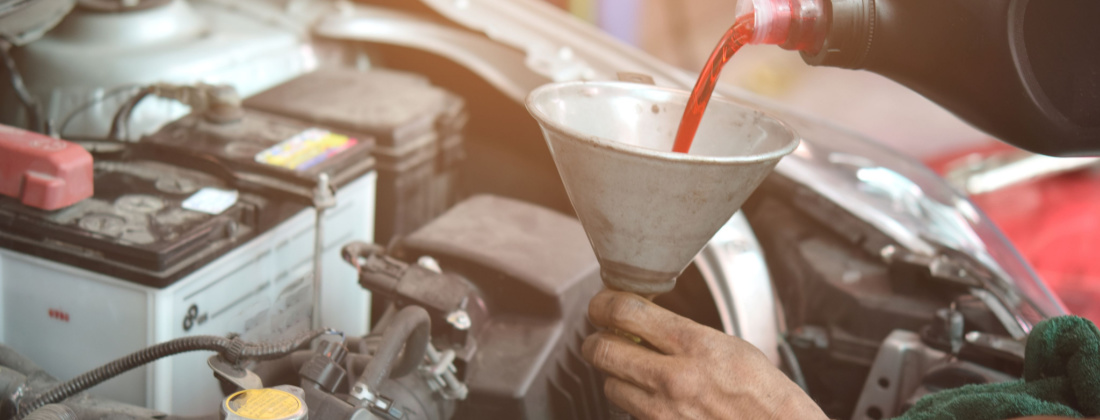
Vehicle Fluid Change
What are vehicle fluids?
A liquid utilized in or drained from a motor vehicle is called vehicle fluid. Gasoline, diesel fuel, motor oil, braking fluid, radiator fluid, hydraulic fluid, transmission fluid, and coolant are vehicle fluids. A liquid utilized in or discharged from a motor vehicle is referred to as vehicle fluid.
It all about the Power steering system
Simply put, the power steering system minimizes the effort necessary to turn the steering wheel. It does not take much effort for a motorist to turn the wheels while driving. Driving an automobile required a lot of arm muscle when steering before power steering was introduced.
When the driver exerts effort on the steering wheel by beginning to spin it, power steering should aid them. Power steering should not be used when travelling in a straight line. The rotary valve detects the application of force to the wheel and operates appropriately.
The power-steering pump in modern automobiles typically works continuously even when the technology is not in use, wasting horsepower and gasoline. It is believed that advancements will solve this issue in the next decade, with an emphasis on saving gasoline.
Types of Power steering Systems
The power steering system can be bifurcated into the following types:
Hydraulic power system
The first power steering system used in automobiles was hydraulic power steering. The hydraulic pump delivers pressurized fluid to the steering rack, lowering the amount of force necessary to drive the vehicle.
The following are the major components of a hydraulic power steering system.
- The serpentine belt, an engine-drive component, provides power and direction to the hydraulic pump.
- When the driver turns the steering wheel, the hydraulic pump feeds high-pressure fluid from the reservoir to the rack.
- The fluid is always provided in the opposite direction that the steering is turned. If the driver turns left, for example, the fluid will reach the right-hand piston, reducing the driver’s effort.
Electric power steering
Today, most automobile models include an electric power steering system. It is due to the increased efficiency that electric steering provides. This power steering uses electrical energy to make the steering unit function more efficiently.
Here are the key factors of how an electric power steering system works.
- When the driver turns the steering wheel, a sensor detects that movement and turns on the electric motor.
- The electric motor gives assistance in the direction where the driver wants to turn the steering wheel.
Electro-hydraulic power steering
An electro-hydraulic power steering system uses the elements of both electric and hydraulic steering systems. The structure matches with a hydraulic system except for the serpentine belt. Instead of the serpentine belt, this system uses an electric motor for steering assistance.
Pros of Power Steering System
- It prevents the wheels from transferring resistance to the steering column.
- It makes steering more comfortable and less exhausting for the driver.
- Power steering in automobiles assists in adjusting steering speed based on driving conditions.
- Electric power steering is more accurate than manual or hydraulic steering systems.
- The electric motor is more efficient than the hydraulic steering’s pressurized fluid.
- An electric steering system has numerous driving modes that allow the driver to tailor the steering input.
- It doesn’t need a lot of energy from the engine, which helps to keep the engine efficient and long-lasting.
Working of Power steering system
A steering wheel, steering column, universal joint, rack, and pinion comprise a power steering system. The steering wheel is coupled to the steering column and connected to the pinion and rack through a universal joint. The tie rods keep the opposite end of the rack fixed to the wheel assembly.
The steering wheel is the point of interaction between the driver and the vehicle. The driver rotates the steering wheel by applying twisting power to it.
But, from the inside, how does power steering in vehicles work? The following steps describe how a power steering system operates.
Step 1: The input given by the driver to the steering wheel rotates the steering column.
Step 2: The motion transfers from the steering column to the pinion and rack through the universal joint.
Step 3: The pinion and rack contain two gears and turn the car wheels in the desired direction
Talk to the Professionals of Ward Tires & Get your vehicle fluid changed today!
Want to upgrade your engine or vehicle fluid oil? No worries, you have come to the right spot, Ward Tires, a well-reputed Automobile Workshop that takes complete care of your cars and heavy-duty vehicles. We have a vast collection of engine oils in different shapes and sizes.

